7 Tribal Art forms and communities of India that preserve and protect the cultural heritage of India
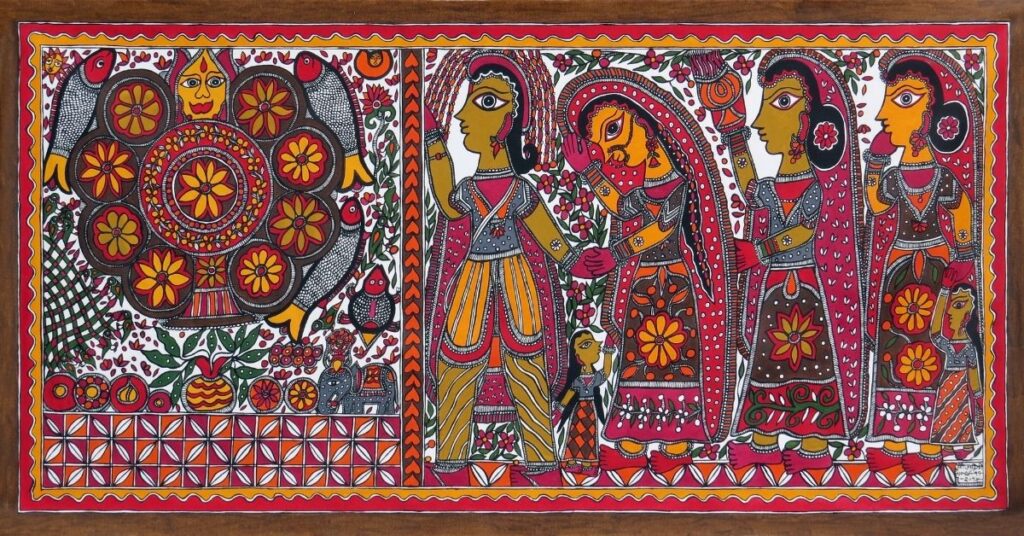
India takes great pride in its traditional art forms. Be it displaying art forms on a global level in the form of Indian fashion or buying art pieces to exhibit in our homes. It is astonishing how Indian Tribal and Traditional Art is part of our daily lives and we are so unaware of it.
What if we told you the rangoli we make are a form of tribal art? Or what if we told you the print on your clothing is a form of tribal art?
It’ll surprise you when you know more about these simple yet intricately beautiful tribal communities art forms.
Kalamezhuthu Art by Ambalavasi Tribe of Kerala
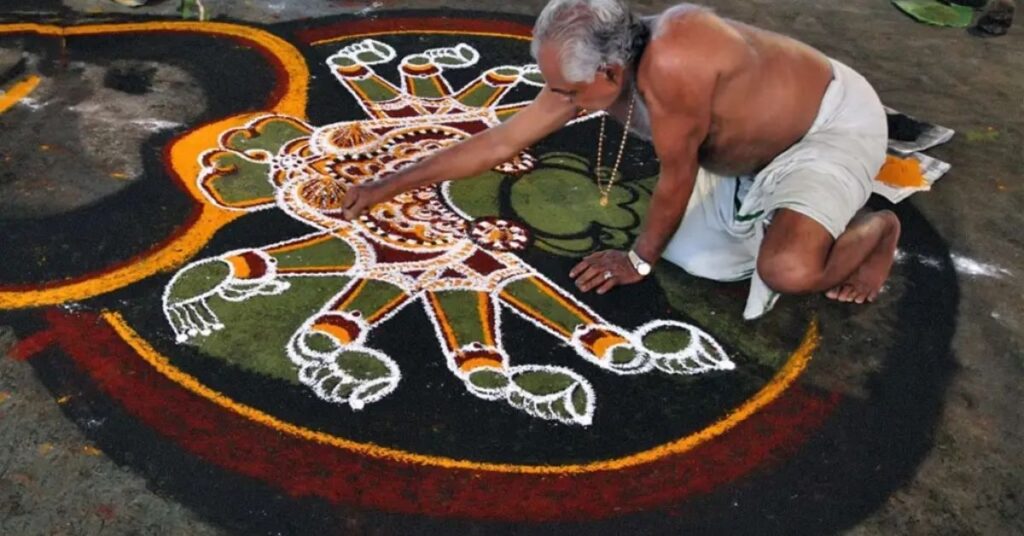
if you are fond of making colourful Rangoli on every occasion, you will love Kalamezhuthu Art. This tribal art form emerges from the Southern state of Kerala. The Ambalavasi tribe takes care of making this art in temples as they are the temple dwelling tribes who perform temple services. We can translate it literally as kalam which means ‘picture’ and ezhuthu which means drawing’. Similar to Rangoli this art form is made on the floor but has certain specifications. The picture are usually of a deity with organic colour fillings only. Furthermore, once they complete drawing the deity, they worship it. And later to erase the art, they dance upon it by performing sacred dance moves specifically mentioned in the tribal folk. Kalamezhuthu Art is a complete ritual in itself.
Warli Painting by the Warli and Malkhar Koli Tribe of Maharashtra
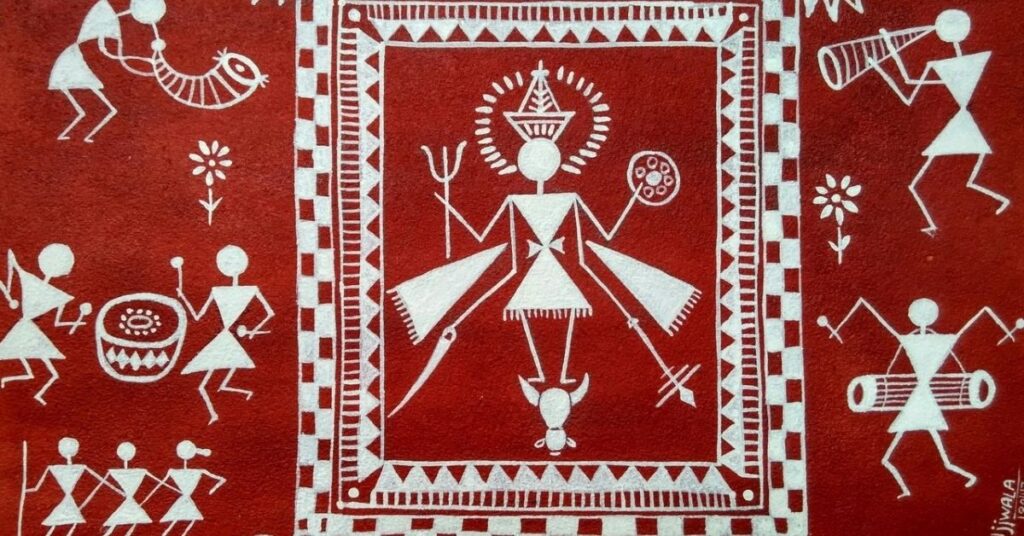
Traditionally done by the women of Warli or Malkhar Koli Tribe, Warli Paintings portray the normal social life of the tribe. The prints of white stick figured humans that we see today on our fabrics, were originally wall paintings. We also see small clay artefacts like dishes and frames that have patterns from Warli tribal art. This tribal art form originated in Maharashtra and depicts activities of human life. Painted in white on red or brown colour made usually from coloured natural soil. The art usually depicts festivities, as well as activities like hunting, farming, etc. This form of tribal art is noticeable even today in some of the caves that are tourist sites today. Also, many tribal households of Maharashtra still have Warli paintings on the outer walls of their homes.
Pattachitra Paintings made by the Odiya Chitrakars and Patua’s of Bengal

As the name suggests these are cloth-based scroll paintings that were used for storytelling in the old days. The cloth scrolls have paintings of deities and narrate stories of those Gods and Goddesses. Pattachitra originates from the tribes of West Bengal and Odisha and are intricately hand-painted using vibrant colours. Additionally, this tribal art form makes use of completely organic and naturally made colours too. In Bengal, they perform the story of Pattachitra by singing the Patua Sangeet which is a singing narration.
Tanjore or Thanjavur Paintings by the Raju and Nayadu community of Tamil Nadu
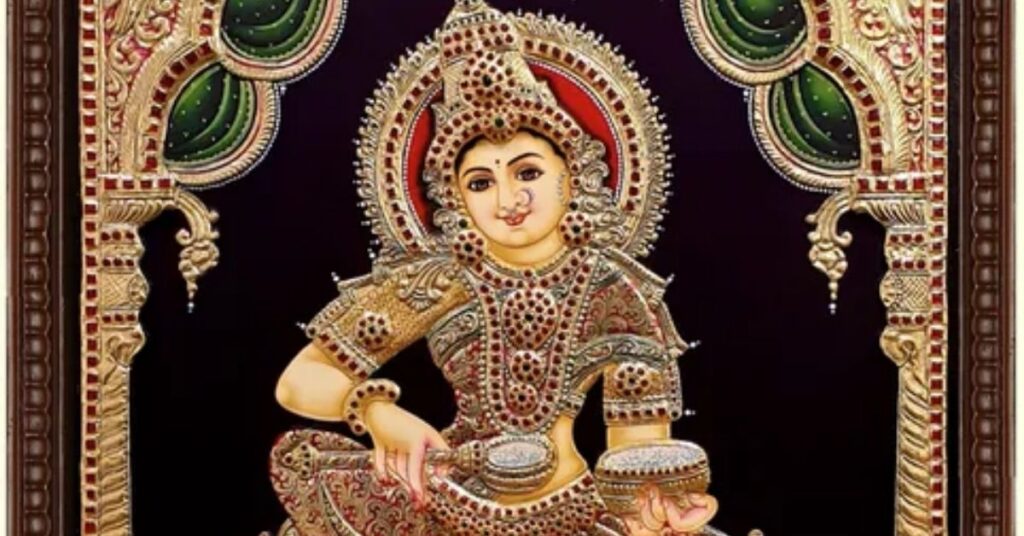
if you ever come across a Tanjore painting chances are they will not allow you to even touch those or stand too close to them. The reason being, these paintings are a creation of some of the most expensive materials. Originated from the state of Tamil Nadu, Tanjore paintings make use of Gold foil work, precious and semi-precious gemstones and glass or mirror work. Above all, this craftsmanship involves working in detail. Also, these paintings are by the Raju community of Thanjavur and the Naidu Community of Madurai. These communities were also known as Jinigaras or Chitragara. In addition, the paintings are made on wooden surfaces from Teak wood or Jackfruit. Tanjore Art can be found even today in the form of murals in temples or the palaces of Tamil Nadu.
Gond Art by the Gond Tribe of Madhya Pradesh
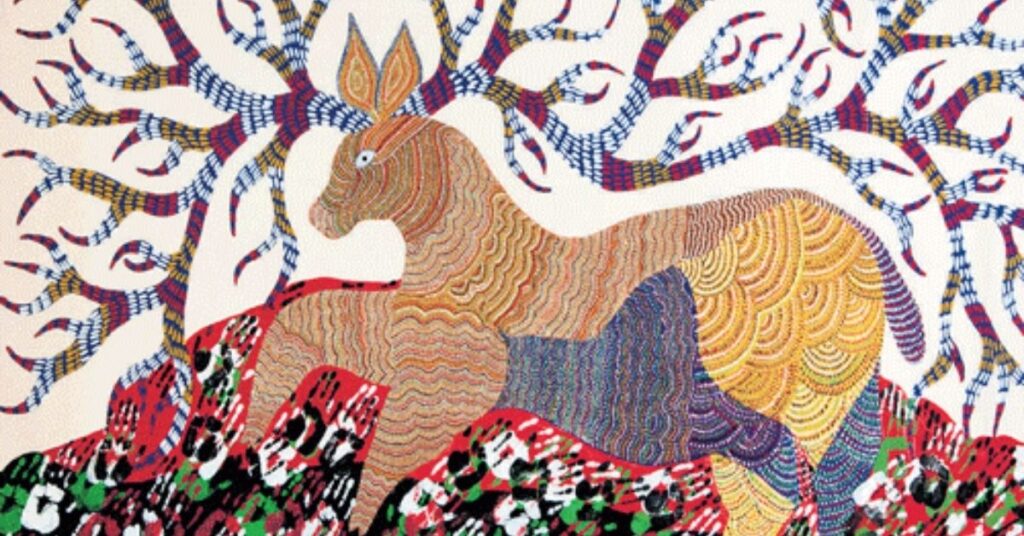
the art form of the largest tribal community of India, the tribals refer to themselves as Koi or Koiture. These paintings are mostly made on walls but can also be found on paper, cloth or canvas. A very unique form of painting, they have an element of mystery and humour. These paintings can survive without any preservation for up to 2 decades. Gond Art depicts nature, Mythology, legends, daily lives and dreams in their art. The most important part is the technique of building up this art form on lines since they draw the lines first and then draw intricate details on it.
Bhil Art by the Bhil Tribe of 4 states
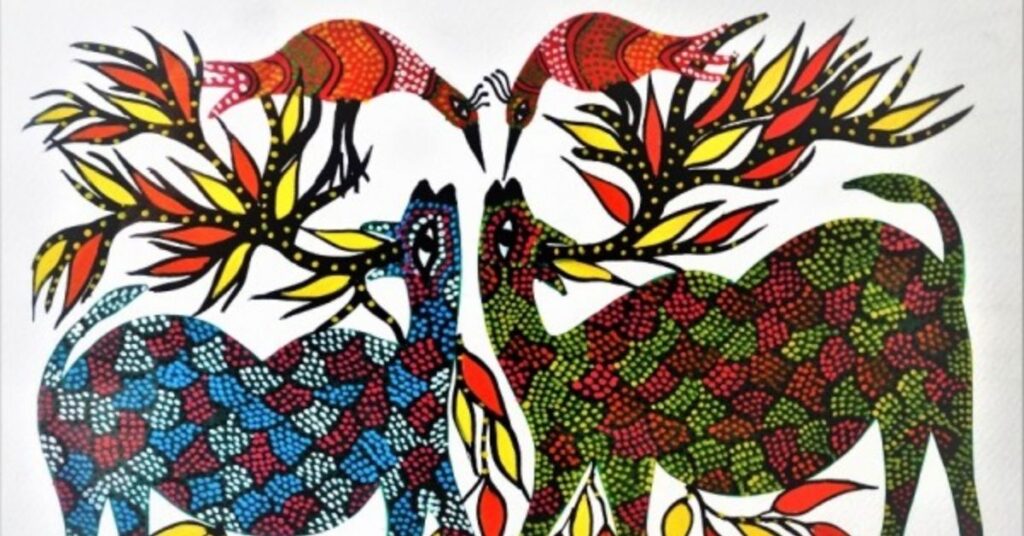
the second largest tribal community after the Gond tribe, Bhil art originates from Madhya Pradesh, Gujarat, Rajasthan and Maharashtra. Like Warli, Bhil art portrays the daily lives and experiences of the Bhil Tribe. You can notice the heavy use of dots to create various patterns that all mean something.Likewise, by using neem twigs are as paintbrushes and ingredients like turmeric, flour, flowers, oil, etc to make vivid natural colours. In fact, the tribe even today takes great pride in their art form and displays it on the clay or mud walls of their houses.
Madhubani Art by the Brahmin and Kayastha Women of Mithila Region
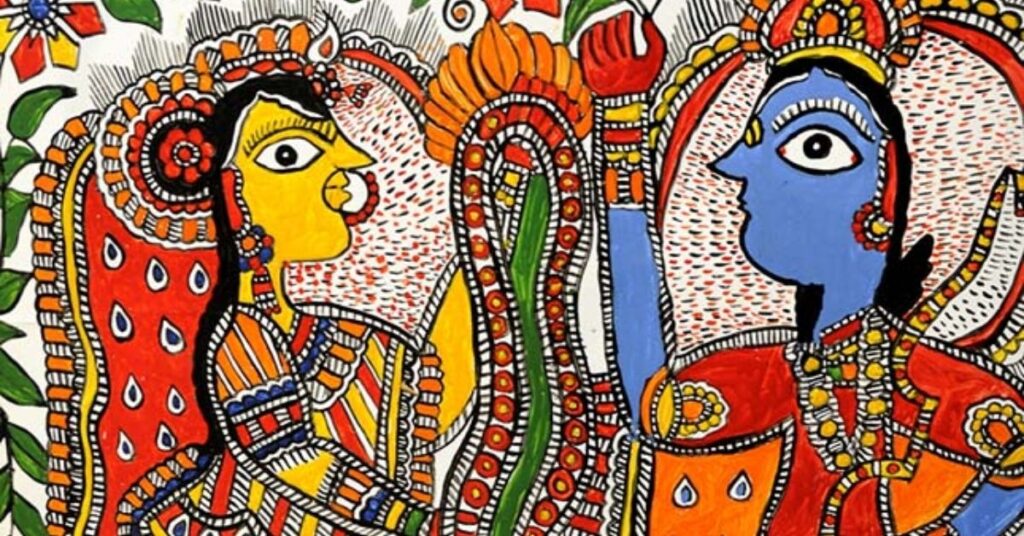
originated in the Mithila Region of Bihar. Traditionally women of Mithila took up this art form for the marriage ceremony of the then king’s daughter Sita. This form of painting is usually on walls but we can view them on papers, canvases and clothing, today. Whereas, the art form depicts religion, social life, and nature in the paintings. Moreover, they preserve the surface or the paper on which the painting by applying cow dung on it. Furthermore, they mix cow-dung with charcoal to make black colour which helps to draw and make outlines.
Having said that, it is just as important to know about the tribal art communities that work so hard to keep these art forms alive, as knowing the art forms alone. Years and years of practising as well as passing down these art forms to generations is what it takes to keep them alive. We must support our tribes and celebrate their culture by promoting tribal art and the communities that keep it alive.
Read more about the history of Indian Art: https://indiachalk.com/blog/influence-of-contemporary-art-in-india/
Follow India Chalk on Instagram for more amazing travel content. You can share your travel story with us. Reach out to us on email at contact[at]ndiachalk[dot]com. This blog is curated by India Chalk and written by Megha Sapre.


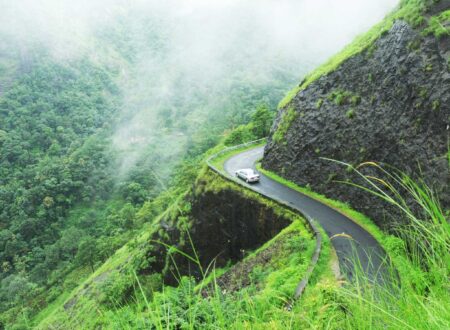
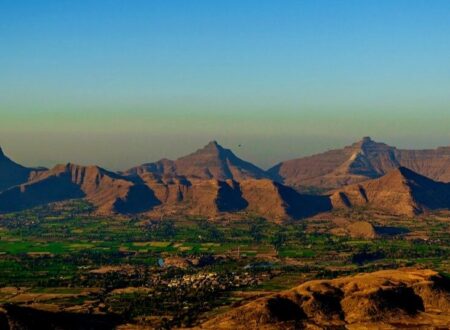
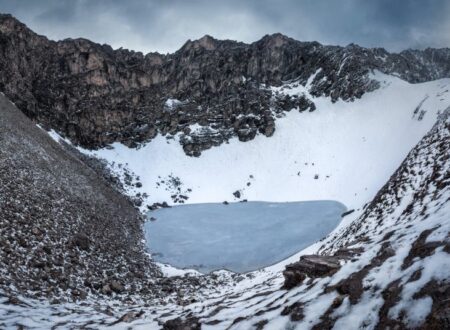

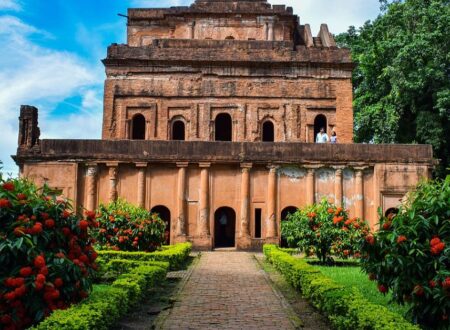
2 Comments